Vitamin B1 (Thiamine)
Introduction
Vitamin B1, or thiamine, is a vitamin that is vital for both humans and animals.
It is a food ingredient and is also commercially produced as a medicine or nutritional supplement.
Thiamine in phosphorylated forms is necessary for a few metabolic processes, such as the digestion of amino acids and glucose. Legumes, some meats and seafood, and whole grains are dietary sources of thiamine.
Since milling grains eliminates a large portion of their vitamin value, thiamine is added to cereals and flour in many nations.
For the treatment and prevention of thiamine deficiency and its associated illnesses, including Wernicke encephalopathy and beriberi, supplements and medicines are available. Leigh syndrome and maple syrup urine illness are some conditions they are used to treat. Medication and supplements are usually taken orally, though they can also be injected intramuscularly or intravenously.
Supplements containing thiamine are usually well tolerated. When repeated doses are administered by injection, allergic responses, including anaphylaxis, may transpire.
The List of Essential Medicines by the World Health Organization includes thiamine. It can be purchased as a generic drug and, in certain nations, as a nutritional supplement without a prescription.
Definition
Vitamin B1 is another name for thiamine, one of the B vitamins. It is a cation that is often provided as a salt of chloride.
It is nearly insoluble in less polar organic solvents but soluble in methanol, glycerol, and water.
Thiamine can be converted by the body into its derivatives, the best known of which is thiamine pyrophosphate (TPP), a coenzyme that aids in the breakdown of carbohydrates and amino acids. An aminopyrimidine and a thiazolium ring connected by a methylene bridge make up the chemical structure.
Side chains of methyl and hydroxyethyl are used to replace the thiazole. When the pH is acidic, thiamine remains stable; however, it becomes unstable when exposed to heat and alkaline solutions.
It exhibits a robust Maillard-type reaction. responses. The fluorescent derivative thiochrome, which is produced by oxidation, can be used to measure the vitamin content of biological materials.
Deficiency
Benigna, Wernicke-Korsakoff syndrome, optic neuropathy, Leigh’s illness, African seasonal ataxia (also known as Nigerian seasonal ataxia), and central pontine myelinolysis are among the well-known conditions brought on by thiamine deficiency.
Malaise, weight loss, irritability, and bewilderment are some of the symptoms. Chronic alcoholism is a risk factor for insufficiency in Western countries.
Older folks, those with diabetes or HIV/AIDS, and those who have had bariatric surgery are also at risk. Prolonged usage of diuretics has been linked to varying degrees of thiamine deficiency.
Biological Functions
Thiamine monophosphate (ThMP), thiamine pyrophosphate (TPP), thiamine triphosphate (ThTP), adenosine thiamine diphosphate (ADP), and adenosine thiamine triphosphate (TTP) are the five known natural thiamine phosphate derivatives.
They participate in a variety of cellular
functions. The finest top is a coenzyme involved in the metabolism of sugars and amino acids that has been described.
Although thiamine and its derivatives are renowned for their role, they can also act as non-coenzymes by attaching to proteins that do not use that method.
The monophosphate has no known physiological function other than serving as a bridge in the cellular conversion of thiamine to the di- and triphosphates.
Thiamine pyrophosphate
As a coenzyme in metabolic activities, thiamine pyrophosphate (TPP), also known as thiamine diphosphate (ThDP), is involved in the process of polarity inversion.
Thiamine diphosphokinase, an enzyme, catalyzes its synthesis in accordance with the following reaction: thiamine + ATP → TPP
- AMP (EC 2.7.6.2). TPP is a coenzyme for a number of enzymes that catalyze the transfer of two carbon units, specifically the dehydrogenation
- (decarboxylation) of 2-oxoacids (alpha-keto acids) and their subsequent conjugation with coenzyme A. TPP’s capacity to generate a ylide is
- essential to its coenzyme activity. As an example, consider:
found in the majority of species:
- α-ketoglutarate dehydrogenase, also known as 2-oxoglutarate dehydrogenase and pyruvate dehydrogenase
- branched-chain dehydrogenase of α-keto acid
- lyase for 2-hydroxyphytanoyl-CoA
- transketolase.
- Present in some species:
- yeast’s pyruvate decarboxylase
- a number of extra bacterial enzymes
In the metabolism of carbohydrates, the enzymes transketolase, pyruvate dehydrogenase (PDH), and 2-oxoglutarate dehydrogenase (OGDH) are crucial.
PDH connects the citric acid cycle to glycolysis. During the citric acid cycle, OGDH catalyzes the total conversion of 2-oxoglutarate (alpha-ketoglutarate) to succinyl-CoA and CO2.
One of the citric acid cycle’s rate-limiting steps is the reaction that OGDH catalyzes.
Transketolase is a cytosolic enzyme that is essential to the pentose phosphate pathway, which is a key process for the production of ribose and deoxyribose, two pentose sugars.
The primary energy transfer molecule for the cell, adenosine triphosphate (ATP), is produced by metabolic pathways that include the mitochondrial PDH and OGDH.
PDH is also involved in the nervous system’s myelin and acetylcholine neurotransmitter production.
Thiamine Triphosphate
Though its function in this process is unclear, ThTP is thought to play a part in the activation of chloride channels in the neurons of mammals and other animals.
ThTP may have additional cellular functions because it is present in fungi, bacteria, and plants. It is related to how Escherichia coli reacts when starved of amino acids.
Adenosine Derivatives
Although AThDP is present in vertebrate liver in trace amounts, its function is yet unclear.
E. coli has AThTP, which builds up as a result of carbon deprivation. AThTP might make up as much as 20% of the total thiamine in this bacterium.
Lesser levels can also be found in animal tissue, yeast, and the roots of higher plants.
Medical Uses
Thiamine is transferred from the placenta to the fetus during pregnancy. Compared to other adults, pregnant women have a higher need for this vitamin, particularly in the third trimester.
Due to thiamine losses during vomiting, pregnant women with hyperemesis gravidarum are more likely to experience thiamine insufficiency.
Even if the mother experiences a thiamine deficit as a result of nursing, thiamine is transferred through breast milk.
Thiamine is necessary for the formation of both the mitochondrial and synaptic membranes. Additionally, it has been proposed that a deficiency may contribute to sudden infant death syndrome and impede the development of a newborn’s brain.
Dietary Recommendations
In 1998, the US National Academy of Medicine revised the Recommended Dietary Allowances (RDAs) and Estimated Average Requirements (EARs) for thiamine.
For both men and women over the age of 14, the EARs for thiamine are 1.1 mg/day and 0.9 mg/day, respectively; the RDAs are 1.1 and 1.2 mg/day, too.
To offer appropriate intake amounts for people with greater than normal requirements, RDAs are higher than EARs.
The recommended daily allowance (RDA) for pregnant and nursing women is 1.4 mg.
The Adequate Intake (AI) for newborns under the age of 12 months is 0.2–0.3 mg/day, and the Recommended Daily Allowance (RDA) for children aged 1–13 years increases with age from 0.5 to 0.9 mg/day.
The combined collection of data is referred to as Dietary Reference Values by the European Food Safety Authority (EFSA), which uses Average Requirements in place of EARs and Population Reference Intakes (PRIs) in place of RDAs.
The recommended daily intake (PRI) for males, women (including those who are pregnant or nursing), and children is 0.1 mg of thiamine per megajoule (MJ) of energy.
Given that 1 MJ is equivalent to 239 kcal, an adult ingesting 2390 kcal should be taking in 1.0 mg of thiamine. This is a little less than the RDA in the US.
Since there is no evidence of harmful effects from large doses of thiamine in humans, neither the National Academy of Medicine nor the EFSA have established an upper intake level.
| Age group | RDA (mg/day) |
| Infants 0–6 months | 0.2* |
| Infants 6–12 months | 0.3* |
| 1–3 years | 0.5 |
| 4–8 years | 0.6 |
| 9–13 years | 0.9 |
| Females 14–18 years | 1.0 |
| Males 14+ years | 1.2 |
| Females 19+ years | 1.1 |
| Pregnant/lactating females 14–50 | 1.4 |
| Age group | Adequate intake (mg/MJ) |
| All persons 7 months+ | 0.1 |
Safety
When taken orally, thiamine is usually well tolerated and non-toxic. Seldom have serious side effects such as allergic responses, nausea, lethargy, and poor coordination, which have been reported when thiamine is administered intravenously.
Labeling
To comply with US regulations for food and dietary supplement labeling, the quantity in a serving is stated as a percentage of the Daily Value. The Daily Value has been 1.2 mg, in compliance with the RDA, since May 27, 2016.
Sources
A large range of processed and whole foods, such as lentils, peas, whole grains, pork, and nuts, contain thiamine. The approximate amount of thiamine in a daily prenatal vitamin supplement is 1.5 mg.
Food Fortification
Because processing reduces vitamin content, some nations mandate or suggest fortifying grain foods including wheat, rice, and maize (corn).
As of February 2022, food fortification of wheat, rice, or maize with thiamine or thiamine mononitrate is required in 59 nations, the majority of which are in North and Sub-Saharan Africa. The specified doses are between 2.0 and 10.0 mg/kg.
There is a volunteer fortification scheme in 18 more countries. For instance, the Indian government suggests 3.5 mg/kg of “atta” (whole wheat) and “maida” (white) flour.
Synthesis
Biosynthesis
Plants, fungi, bacteria, and certain protozoans all produce thiamine through biosynthesis. Thiamine-phosphate synthase first biosynthesizes the pyrimidine and thiazole moieties, which are subsequently joined to create ThMP.
Phosphomethylpyrimidine synthase (ThiC), an enzyme belonging to the radical SAM superfamily of iron-sulfur proteins, catalyzes a process that forms the pyrimidine ring system and requires S-adenosyl methionine as a cofactor.5-aminoimidazole ribotide is the starting material.
Through radical intermediates, it undergoes a rearrangement reaction and incorporates the blue, green, and red fragments displayed into the final product.
Thiazole synthase (EC 2.8.1.10) catalyzes a process that forms the thiazole ring. The final precursors are 2-iminoacetate, 1-deoxy-D-xylulose 5-phosphate, and ThiS, a sulfur transporter protein.
To assemble the whole ring at the enzyme’s active site, another protein called ThiG is also needed.
The last stage in the formation of ThMP is the decarboxylation of the thiazole intermediate, which combines with the phosphomethylpyrimidine kinase-produced pyrophosphate derivative of phosphomethylpyrimidine.
Different organisms have different mechanisms for biosynthesis. Thiamine-phosphate kinase phosphorylates ThMP to the coenzyme TPP in E. Coli and other Enterobacteriaceae (ThMP + ATP → TPP + ADP).
Thiamine diphosphokinase hydrolyzes ThMP to thiamine in most bacteria and eukaryotes and then pyrophosphorylates it to TPP (thiamine + ATP → TPP + AMP). Riboswitches control the biosynthesis pathways.
When the cell has enough thiamine, it attaches itself to the messenger RNAs (mRNAs) of the necessary enzymes in the process and stops them from translating.
In the absence of thiamine, there is no inhibition and the production of the enzymes needed for biosynthesis.
The TPP riboswitch is a unique riboswitch that is present in both prokaryotic and eukaryotic organisms, making it the only one of its kind.
Laboratory Synthesis
When ethyl 3-ethoxypropanoate was treated with ethyl formate in the first total synthesis in 1936, an intermediate dicarbonyl molecule was produced.
This chemical then interacted with acetamidine to make a substituted pyrimidine.
Its hydroxyl group was converted to an amino group by nucleophilic aromatic substitution, which involved treating the chloride derivative with phosphorus oxychloride first and then ammonia.
Hydrobromic acid was then used to change the ethoxy group into a bromo derivative. Using 4-methyl-5-(2-hydroxyethyl)thiazole, an alkylation reaction produced thiamine (as its dibromide salt) in the last step.
Industrial Synthesis
The 1936 laboratory-scale synthesis was modified by Merck & Co., enabling them to produce thiamine in Rahway in 1937.
Hoffman La Roche, however, looked into a different approach utilizing the intermediate Grewe diamine (5-(aminomethyl)-2-methyl-4-pyrimidinamine), which was first disclosed in 1937, and competing manufacturing methods were used.
The search for effective diamine delivery systems is still ongoing. Between 100 and 1,000 tonnes of thiamine are produced or imported into the European Economic Area each year, and it is registered under the REACH regulation there.
Synthetic Analogues
Synthetic derivatives of thiamine are the basis for many vitamin B1 mimics, including fursultiamine, sulbutiamine, and benfotiamine.
The majority were created in Japan throughout the 1950s and 60s with the goal of improving absorption in contrast to thiamine.
Certain products can be used as prescription drugs or over-the-counter dietary supplements in certain countries to treat diabetic neuropathy and other medical issues.
Absorption, Metabolism and Excretion
Alkaline phosphatase enzymes hydrolyze thiamine phosphate esters found in meals in the upper small intestine. The absorption process is carrier-mediated at low concentrations.
Passive diffusion is another method of absorption that happens at larger concentrations. A folate deficit or alcohol use can both impair active transport.
Most of the thiamine present in serum is incorporated into proteins, primarily albumin. Erythrocytes contain about 90% of the total thiamine present in blood.
Rat serum contains a particular binding protein known as thiamine-binding protein, which is thought to be a hormone-regulated carrier protein crucial for thiamine distribution across tissues.
Thiamine is absorbed by blood and other tissue cells through both passive diffusion and active transport.
Thiamine transport is possible for two members of the family of transporter proteins that are expressed by the genes SLC19A2 and SLC19A3.
A transcellular proton gradient and a Na+-dependent transporter appear to be involved in the uptake and secretion of thiamine in certain tissues.
About 25 to 30 mg of thiamine can be stored in humans; the highest amounts are found in the kidneys, liver, brain, heart, and skeletal muscle.
It is assumed that all extracellular fluid, including plasma, milk, and cerebrospinal fluid, contains free (unphosphorylated) thiamine and ThMP.
Thiamine that has been heavily phosphorylated cannot cross cell membranes, whereas free thiamine and ThMP can.
It has been demonstrated that the distribution of thiamine in the body is influenced by calcium and magnesium and that thiamine insufficiency is exacerbated by magnesium deficit.
Human tissues have lower levels of thiamine than those of other species. Urine is the primary organ for the excretion of thiamine and its metabolites, which include 4-methyl-thiazole-5-acetic acid and 2-methyl-4-amino-5-pyrimidine carboxylic acid.
Interference
There are several methods to impede the bioavailability of thiamine in diet. When sulfites are added to food as a preservative, they will cleave the pyrimidine ring from the thiazole ring and attack thiamine at the methylene bridge.
In acidic conditions, this process proceeds more quickly. Thermolabile thiaminases, which are found in some fish and shellfish species as well as other meals, break down thiamine.
In Nigeria, the African silkworm, Anaphe venata, is traditionally consumed as pupae. Taking in causes a thiamine shortage.
Previous research showed that in Thailand, the intake of fermented. Thiamine shortage was brought on by undercooked fish, but it was cured by cooking the fish beforehand or refraining from eating it.
Intestinal microorganisms in ruminants produce thiamine and thiaminases.
The cell surface enzymes called bacterial thiaminases need to separate from the cell membrane in order to become active; in an acidotic environment, this separation can happen in ruminants.
Overfeeding grain results in increased thiaminase release from ruminal bacteria and subacute ruminal acidosis in dairy cows, which leads to thiamine deficiency.
Chewing tea leaves and areca nut slices wrapped in betel leaves both decreased the bioavailability of thiamine in food through a process that may involve tannins, according to reports on two small trials done in Thailand.
Vitamin absorption is known to be disrupted by bariatric surgery used for weight loss. According to a meta-analysis, vitamin B1 insufficiency affects 27% of patients who had bariatric surgery.
History
The first water-soluble vitamin to be identified was thiamine. The first reports of beriberi in people and hens indicated that diets high in polished white rice were the source of the condition, but they did not link it to the lack of a then-unidentified critical vitamin.
The earlier germ explanation for beriberi was refuted in 1884 by Takaki Kanehiro, a surgeon general in the Imperial Japanese Navy, who proposed that nutritional deficiencies were the cause of the illness.
During a nine-month sea cruise, he switched meals on a navy ship and found that substituting a diet of white rice alone with one that also included barley, pork, milk, bread, and vegetables almost completely eradicated beriberi.
Though vitamins were unknown at the time, Takaki had included a lot of items in the effective diet and mistakenly believed that this contributed to its benefits.
The Navy wasn’t convinced of the necessity of such a costly diet-improvement program, and many men kept dying from beriberi, even in the midst of the 1904–05 Russo–Japanese War.
Takaki’s experiment was not rewarded until 1905 after the anti-beriberi component was found in barley bran and rice bran (which could be eliminated by polishing into white rice).
According to the Japanese peerage system, he was made a baron and was subsequently referred to as “Barley Baron” with great fondness.
The precise link to grains was established in 1897 by Dutch East Indies military physician Christiaan Eijkman, who found that poultry fed cooked, polished rice was paralyzed and that this paralysis could be prevented by stopping the polishing process.
He explained beriberi by saying that rice’s high starch content is poisonous. He thought that a substance found in the rice polishing counteracted the toxicity.
A colleague named Gerrit Grijns recognized the link between eating too much-polished rice and beriberi in 1901 and came to the conclusion that polishing removes a vital nutrient from the outer layers of the grain, which is present in rice.
In the end, Eijkman received the 1929 Nobel Prize in Physiology and Medicine for his discoveries that contributed to the discovery of vitamins.
In 1910, Umetaro Suzuki, a Japanese agricultural chemist at Tokyo Imperial University, separated aberic acid—a water-soluble thiamine compound—from rice bran.
(He called it Orizanin subsequently.) He characterized the chemical as both an anti-beriberi factor and a necessary component of human nutrition; nevertheless, the translation of his paper from.
Japanese to Germany lacked a declaration that the compound was a novel discovery, which prevented this finding from receiving international attention.
Polish biochemist Casimir Funk separated the antineuritic material from rice bran in 1911. (the contemporary thiamine), which he referred to as a “vitamin” as it included an amino group. Funk did not, however, fully describe its chemical structure.
The active agent was isolated and crystallized in 1926 by Dutch scientists Barend Coenraad Petrus Jansen and his closest associate Willem Frederik Donath. Robert Runnels Williams identified the agent’s structure in 1934.
The Williams team came up with the name thiamine, a combination of the words “thio” (which means containing sulfur) and “vitamin”.
Through Funk, the term “vitamin” was derived indirectly from the amine group of thiamine; however, at this point, it was recognized that vitamins were not always amines, such as vitamin C.
The Williams group also synthesized thiamine in 1936. In order to comprehend how thiamine deficiency leads to the pathological-physiological symptoms of beriberi, Sir Rudolph Peters in Oxford utilized pigeons.
Head retraction is a symptom of opisthotonos, a disorder that pigeons fed only polished rice developed.
The animals would die in a few days if they were not treated. Thirty minutes after opisthotonos was noticed, thiamine administration resulted in a full recovery.
Since the pigeons’ brains did not exhibit any morphological changes both before and after receiving thiamine therapy, Peters developed the theory of biochemically produced damage.
The diphosphorylated thiamine derivative, or TPP, was demonstrated by Lohmann and Schuster in 1937 to be a necessary cofactor for the oxidative decarboxylation of pyruvate.
FAQ
What is vitamin B1 used for?
One of the B vitamins is thiamine, sometimes referred to as thiamin or vitamin B1. Thiamine maintains a healthy neurological system and aids in the conversion of food into energy. Thiamine is not something your body can produce on its own. But eating usually provides everything you need.
What is the deficiency of vitamin B1?
People initially have nonspecific symptoms like exhaustion and agitation, but a severe deficit, known as beriberi, can impact the heart, brain, muscles, and nerves. The symptoms and a positive reaction to thiamin supplements are used to make the diagnosis.
Who should not take vitamin B1?
If you have ever experienced an adverse reaction to thiamine, you should avoid using it. Consult a physician or pharmacist to find out if taking this drug is safe for you if you: take other medications, use herbal supplements, or have any other medical issues.
How much vitamin B1 per day?
Numerous foods, such as beef, beans, nuts, cereal grains, and meat, contain it. The recommended dietary allowance is the quantity that should be ingested daily (RDA). The RDA for adult males is 1.2 milligrams per day. 18-year-old adult females: the recommended daily allowance is 1 mg.
What is the best form of B1?
Nevertheless, thiamine’s lipid-soluble derivatives, which have been used to treat myalgia, diabetic neuropathy, and other ailments, such as thiamine propyl disulfide, thiamine tetrahydro furfuryl disulfide, and benfotiamine, are said to be more bioavailable than thiamine’s water-soluble counterpart.
What vegetable is high in B1?
Which is the finest place to get thiamine? Yeasts (such as nutritional yeast), sea vegetables, some whole grains, green vegetables (such as asparagus and peas), seeds, beans, and fish are some of the healthiest foods high in thiamine.
What destroys vitamin B1?
Foods that are heated, cooked, processed, or boiled in water lose their thiamin. Cooking water contains dissolved vitamin B1, due to its water solubility.

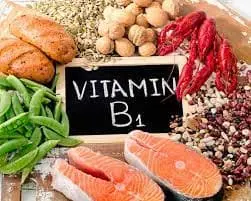
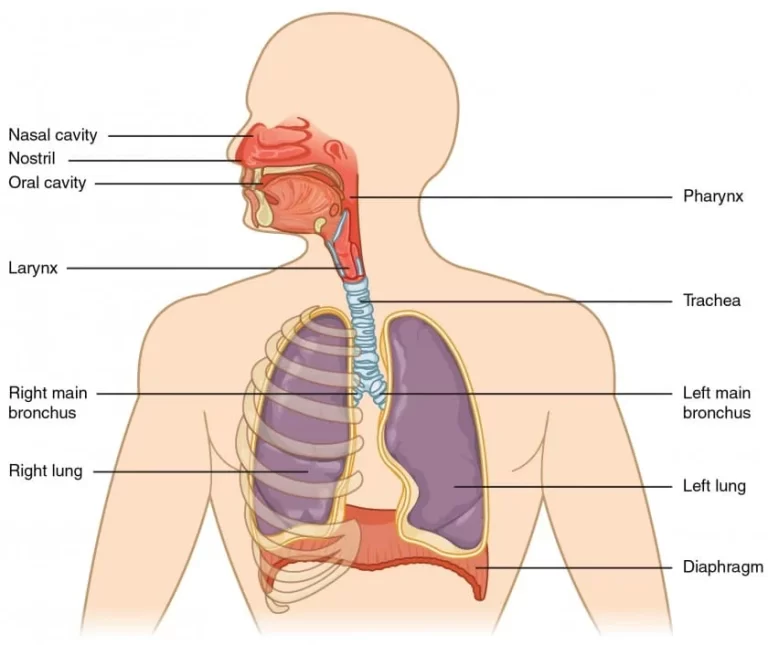
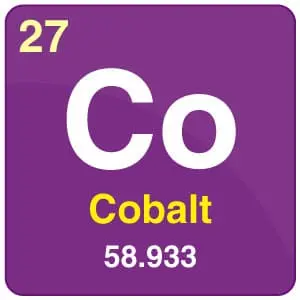

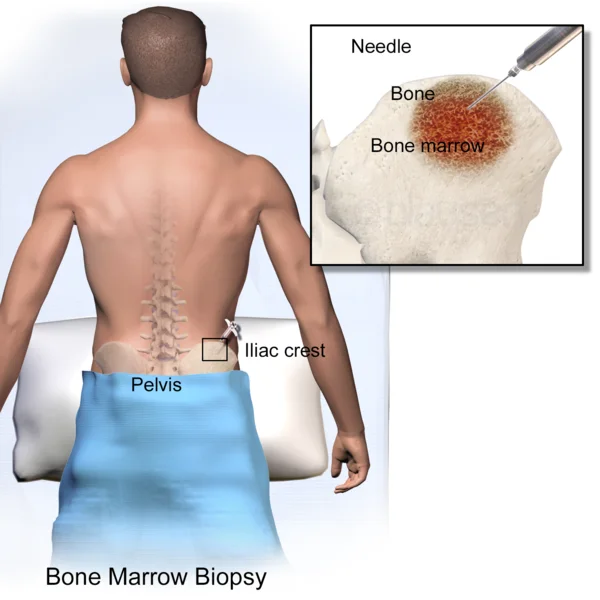
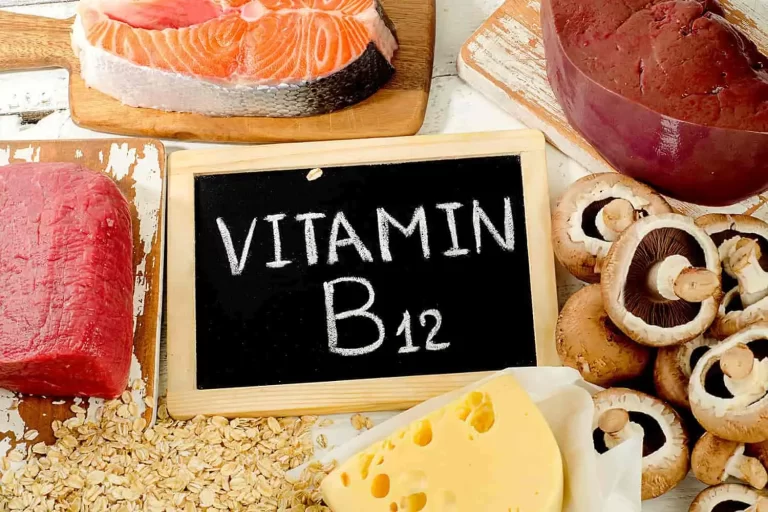
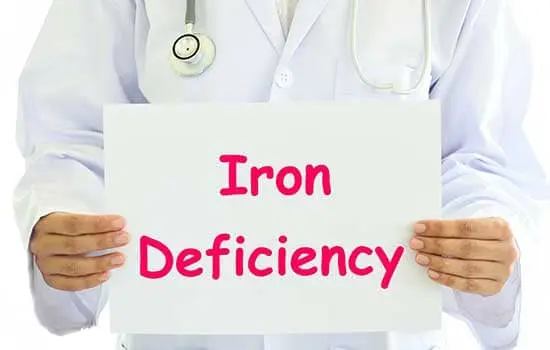
One Comment